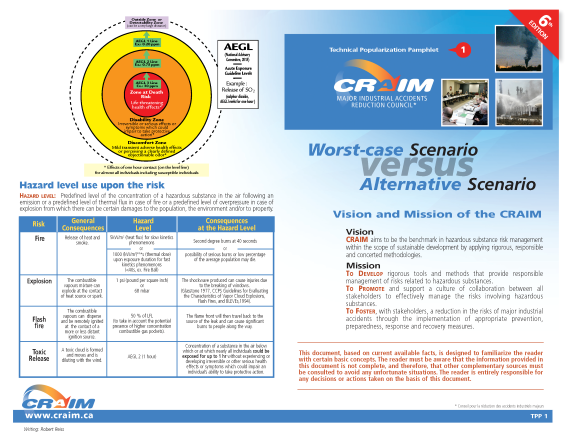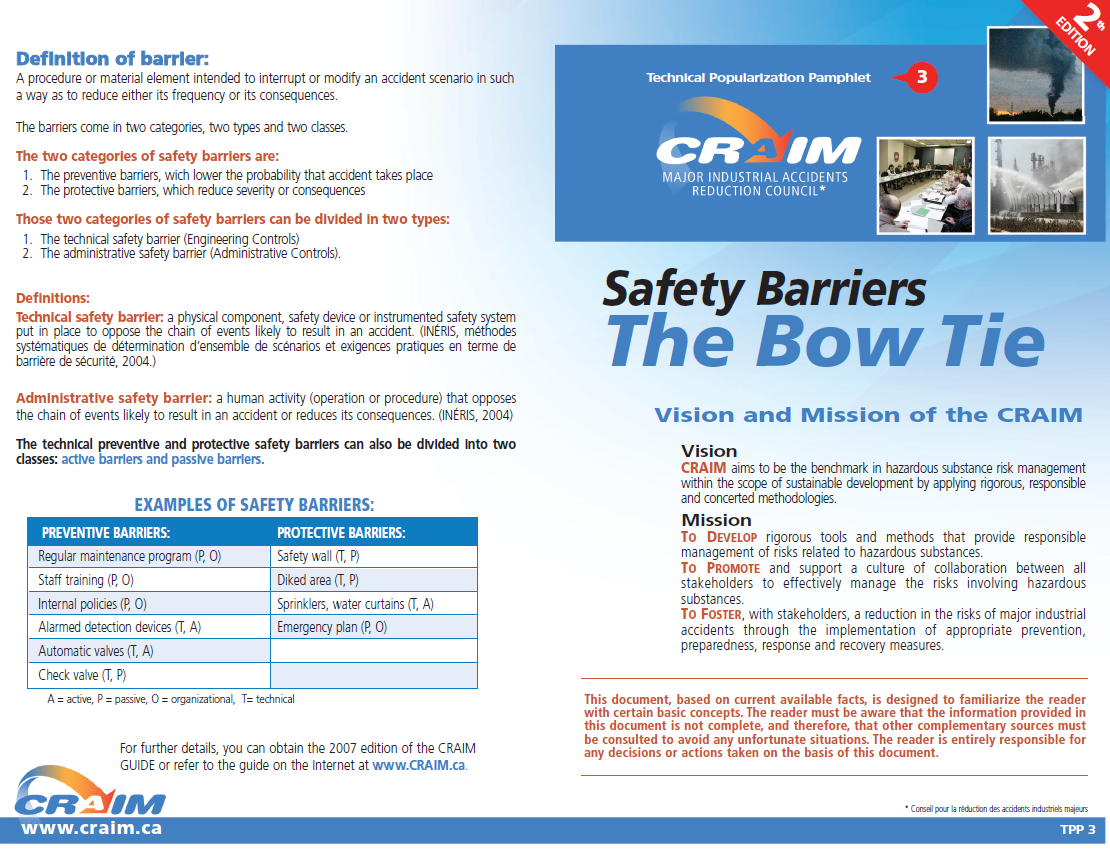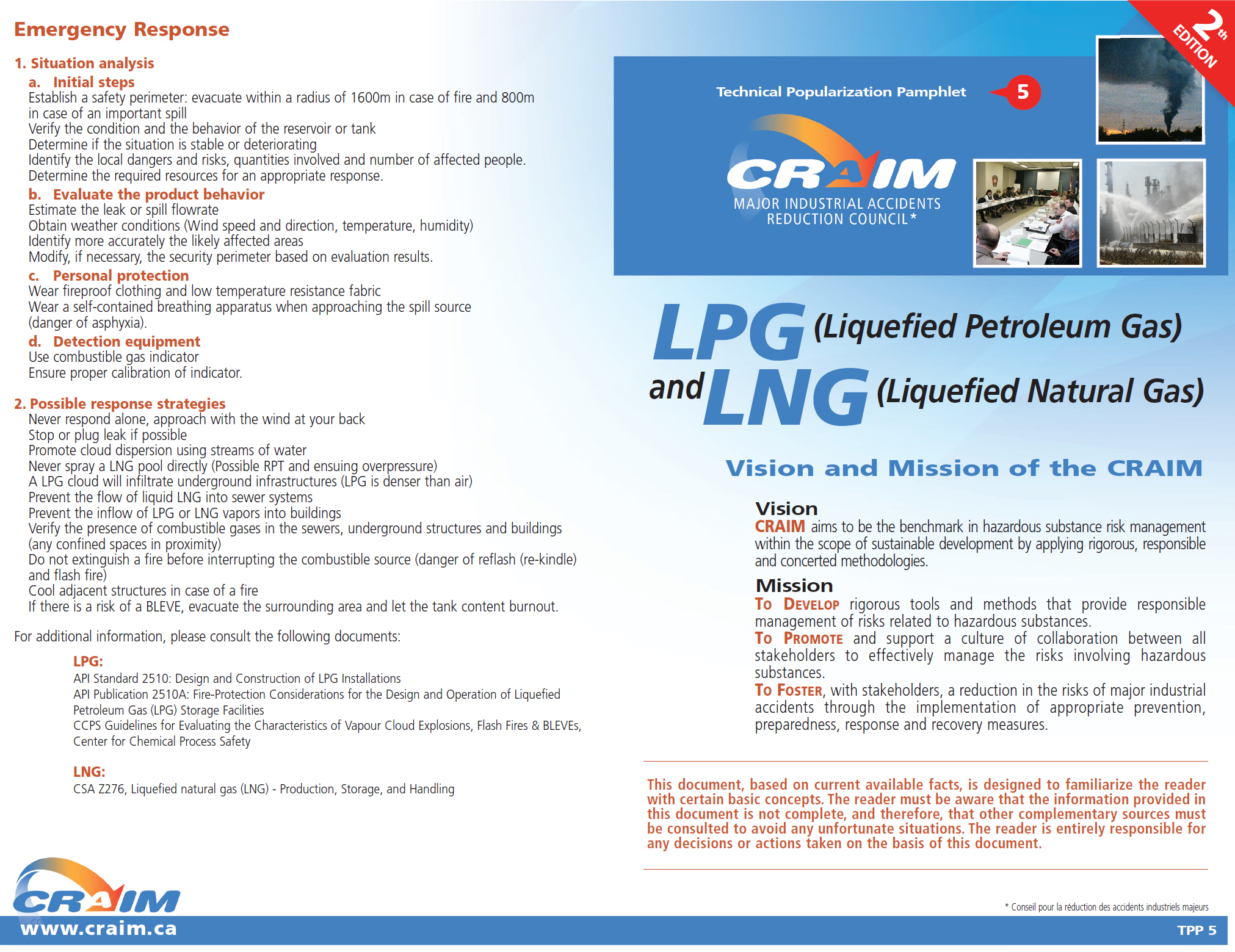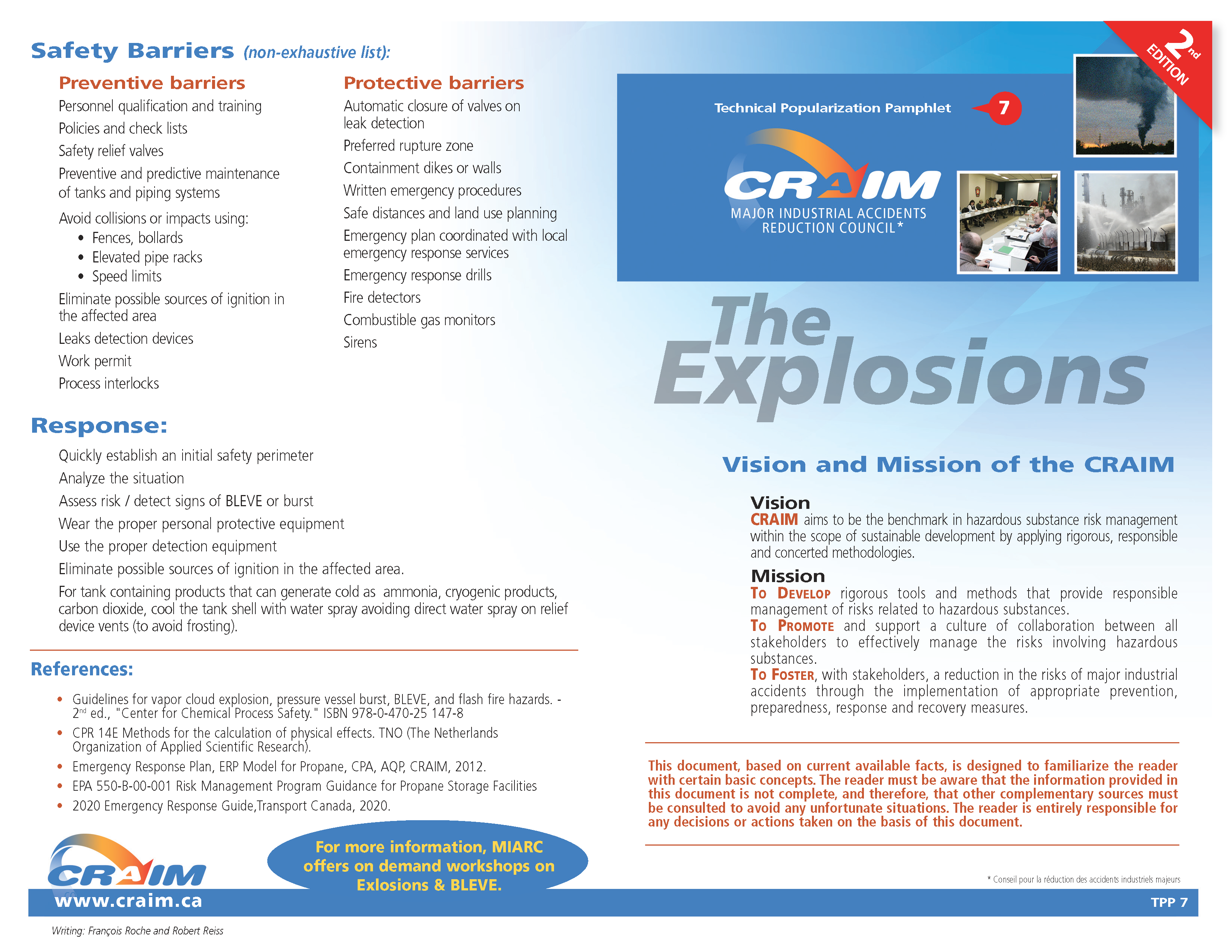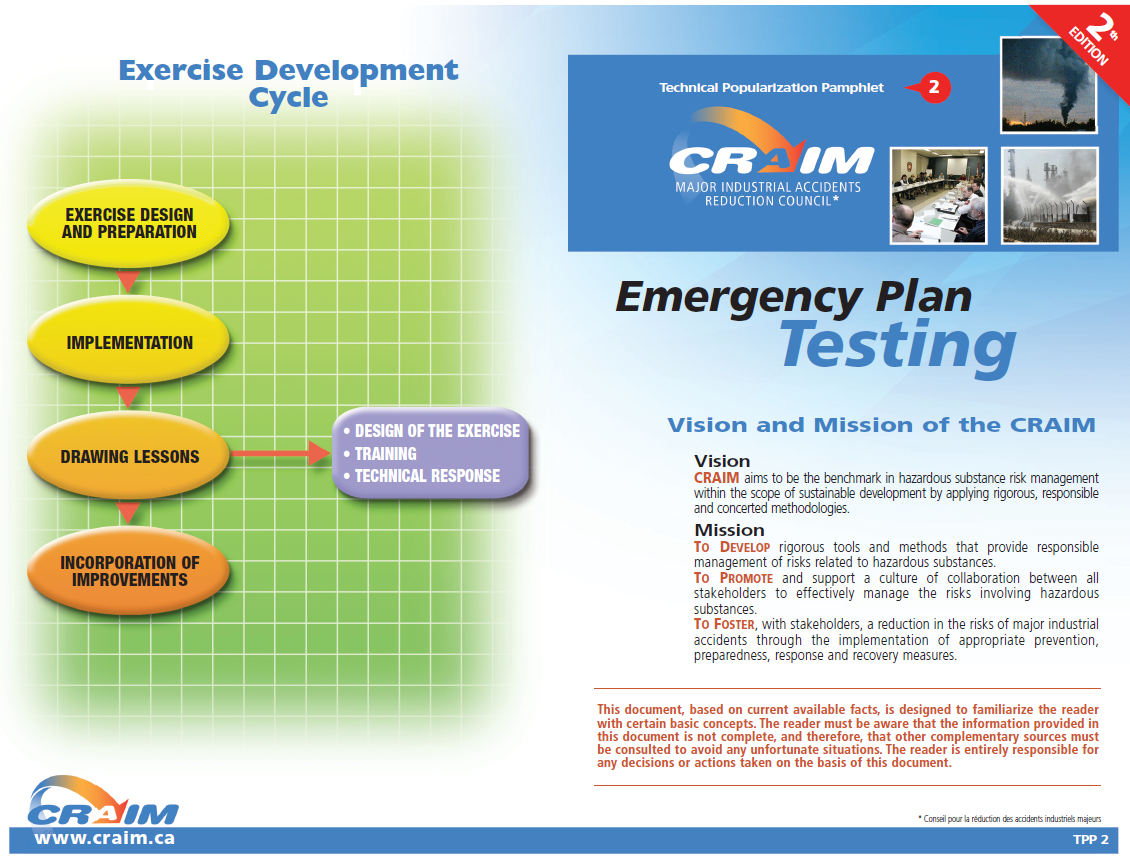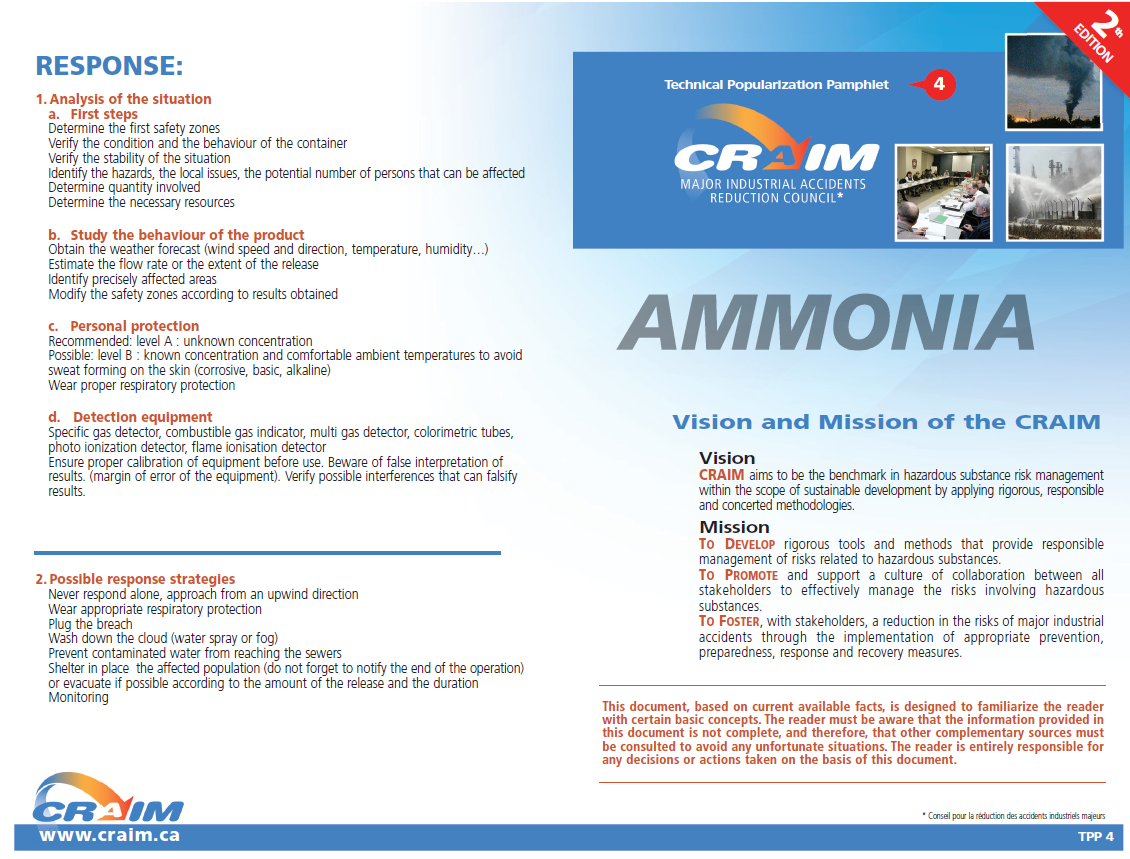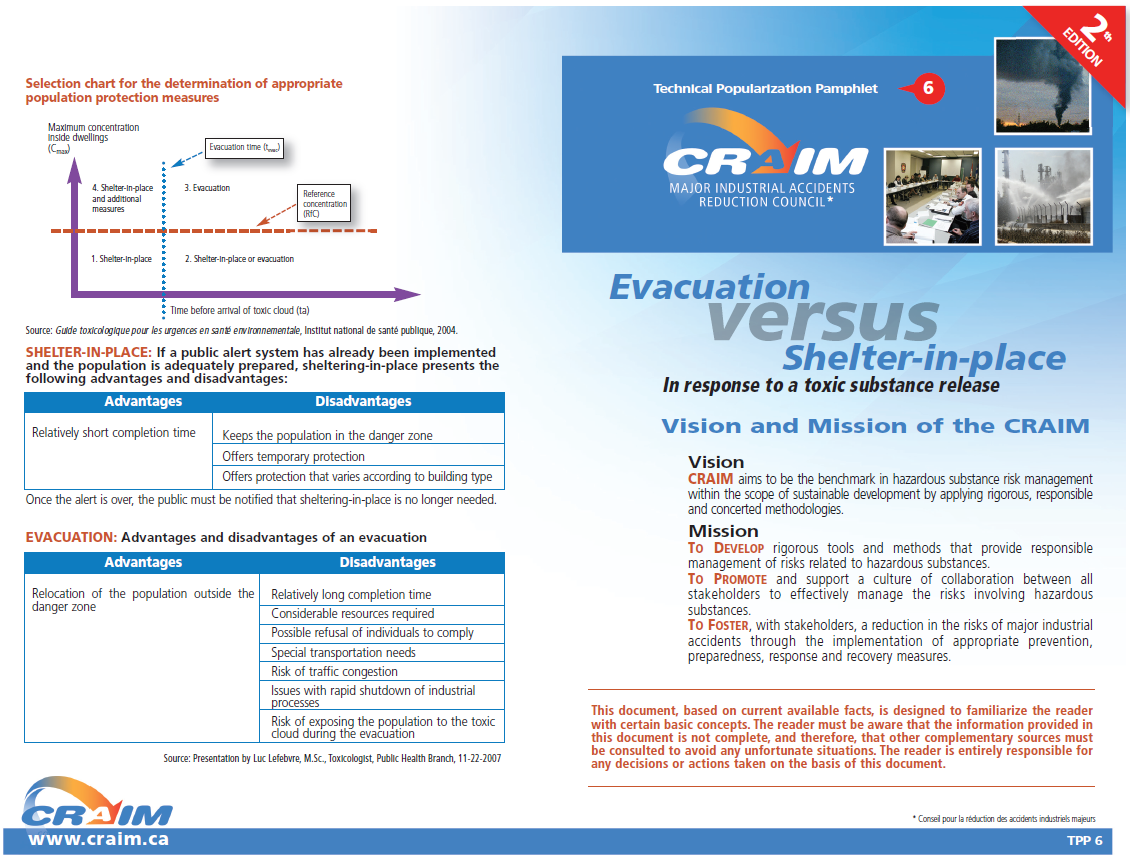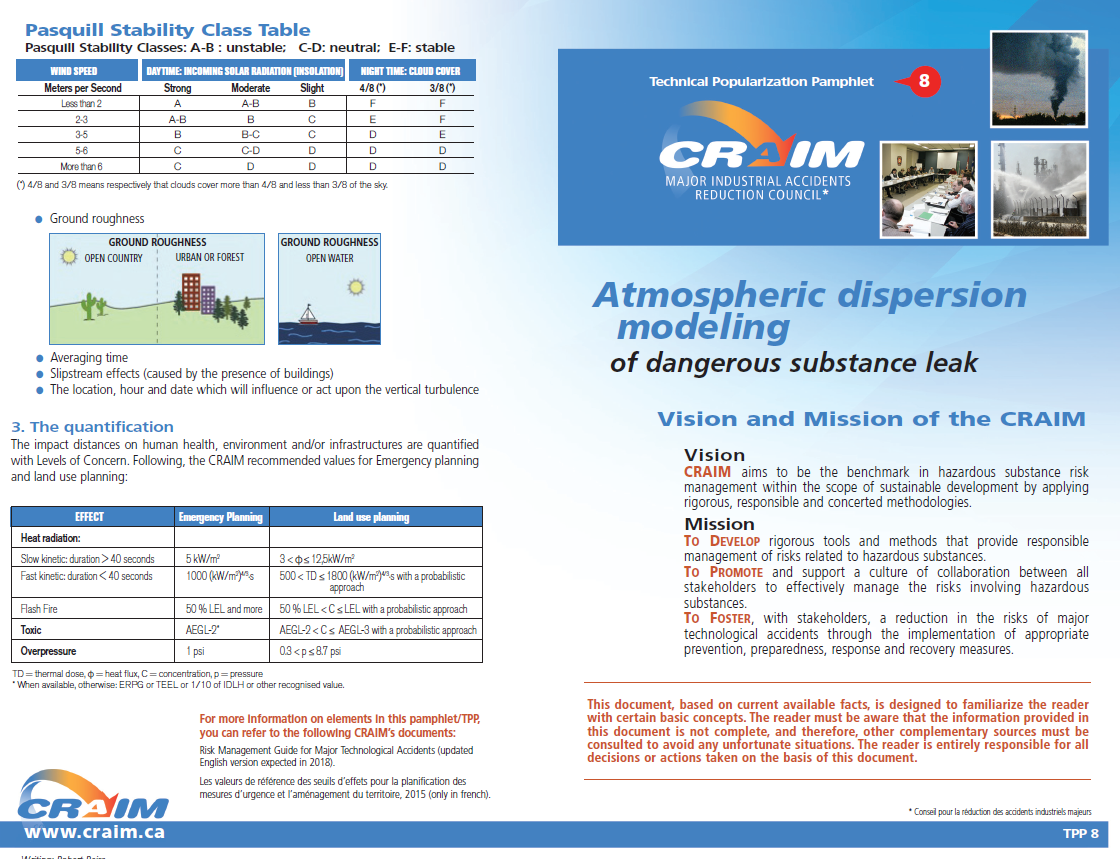TECHNICAL POPULARIZATION PAMPHLETS
These documents are based on the current and most recent knowledge and their goal is to familiarize the reader with basic concepts. The reader shall understand that the information therein is not exhaustive and that he/she must consult other documentary sources in order to avoid undesirable situations. The reader is always responsible for the measures and decisions taken on the basis of these documents.
TPP 1 - Worst case scenario versus Alternative scenario
You will find definitions, synonyms and other useful information regarding these types of scenarios.
TPP 3 : Safety Barriers - The Bow Tie
The bow tie used in several industrial sectors was developed by Shell. It is based on a tree approach, a characteristic that allows to immediately visualize the possible causes of an accident, its consequences and the barriers that have been installed. The undesired event (accident in centre) may be the result of several possible causes, such as the release of a toxic substance, an explosion, a ruptured pipe, a burst of reactivity, a breach in a reservoir, the decomposition of a substance, etc. This tool allows to illustrate the results of a detailed risk analysis (of FMECA, HAZOP or What If type, for example), a more complex process than a preliminary risk analysis.
TPP 5 : LPG (Liquefied Petroleum Gas) and LNG (Liquefied Natural Gas)
LPG and LNG are hydrocarbons mainly used as fuel for heating. LPG comprises propane and butane. LNG is essentially liquefied methane. LPG and LNG are stored and transported in a liquefied state in order to reduce their volume. LPG’s are liquefied under pressure at ambient temperature, whereas LNG is cryogenically liquefied (using cold temperature) at atmospheric pressure.
TPP 7 : Explosions
This TPP provides a comparison between the different types of explosions that may occur as well as a list of possible safety barriers that can be used to prevent and reduce the impact of such events
TPP2 : Emergency Plan Testing
An exercise is a structured activity that enables participants to put theoretical knowledge into practice, to
familiarize themselves with their roles and responsibilities in an emergency situation and to validate the
various procedures established in the emergency plan. Exercises complement training and are designed to
ensure that participants are prepared to respond effectively in the event of an accident.
TPP 4 : Ammonia
Ammonia is widely used. It is found in gas form, liquefied under pressure or mixed with
water as an aqueous solution. Ammonia is mainly used as: Fertilizers, refrigerants, polymer synthesizers, explosives manufacturing and cleaners.
Human health is a main concern in the event of an ammonia release. Spills of ammonia solutions in the environment will have disrupting effects if it reaches streams or lakes as it will greatly increase the pH.
TPP 6 : Evacuation versus Shelter-in-place
This TPP summarizes the main elements to be considered when a major industrial accident occurs involving a toxic cloud.
TPP 8 : Atmospheric dispersion modeling of a dangerous substance leak
This TPP provides some basic insight of things that should be considered when using atmospheric dispersion modeling of a dangerous substance leak.

